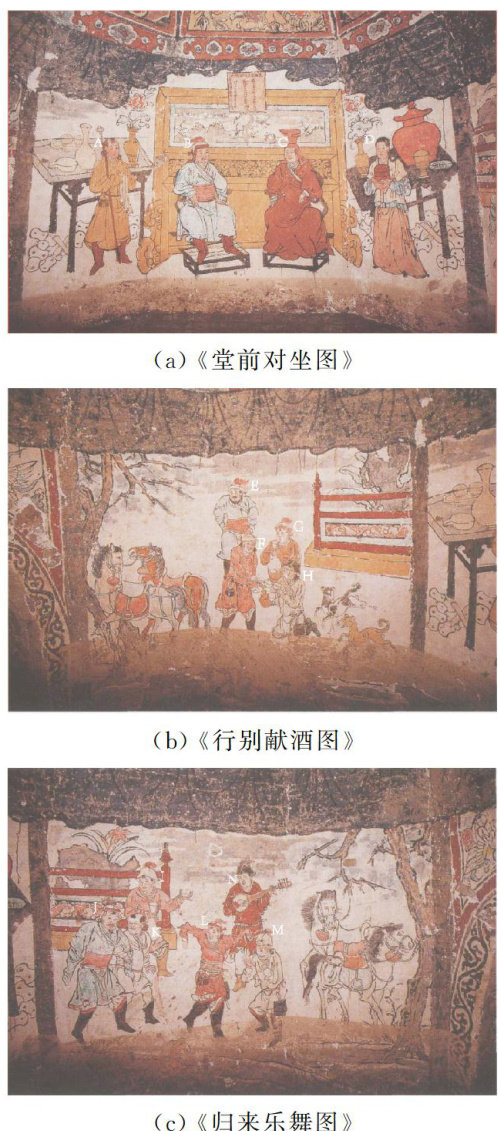蒙汉交融视域下洞耳村墓壁画服饰考与数字化复原


打开文本图片集
关键词洞耳村墓壁画;蒙汉文化;壁画服饰;数字化复原;模糊综合评价体系
中图分类号:TS941.26 文献标志码:A
DOI:10.13338/j.issn.1006-8341.2025.04.012
AbstractAs a valuable archaeological resource from the Yuan dynasty,the tomb murals of Dong'er village depict the multicultural life of Yuan society. Based on historical documents and archaeological materials,this paper provided an in-depth analysis of the Mongolian and Han cultural connotations and costume information depicted in the murals,and completed the simulation repair of costumes. Finally,a fuzzy comprehensive evaluation method was used to assess the effectiveness of the restoration. The research shows that the tomb murals in Dong'er village are significantly influenced by both Mongolian and Han cultures. The subject matter depicts the nomadic culture of Mongolian hunting, banquets,music,and dance rituals,while also incorporating elements of Han culture in the tomb decorations,such as Han-style household items and playful children. This serves as a historical representation of the integration of both cultures. In terms of clothing,the style of the mural garments is primarily characterized by a left-lapel collar and narrow sleeves,reflecting the practical clothing features of the northern nomadic peoples. The sleeve design of the largesleeve gown inherits the tradition of wide sleeves in dress since the Tang and Song dynasties,while preserving the practical narrow sleeves characteristic of Mongolian nomadic culture, reflecting distinct features of national integration. Displaying the costumes of mural figures through digital simulation is of great reference value for the inheritance and development of ancient murals and traditional costume culture.
KeywordsDong'er villge tomb murals;Mongol-Han Culture;mural costumes; digital restoration;fuzzycomprehensiveevaluation
0 引言
元代墓室壁画在中国古代墓室壁画的发展历程中处于一个转折阶段,继汉唐及宋辽时期的高峰之后,其风格内容、表现形式均展现出鲜明的元代特征。(剩余11839字)